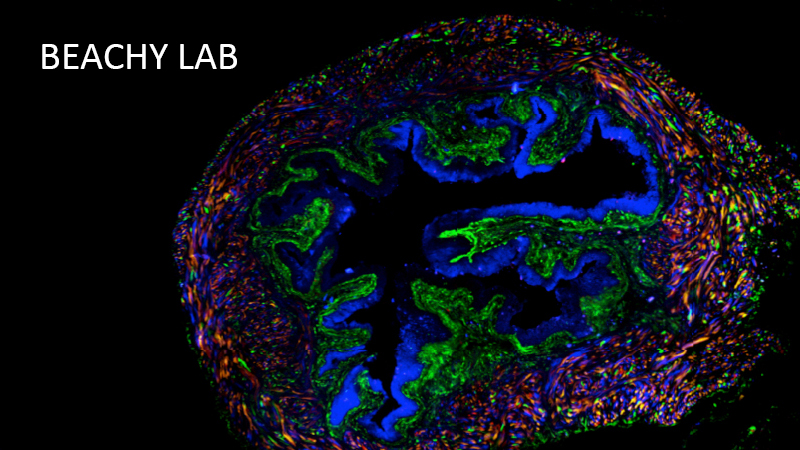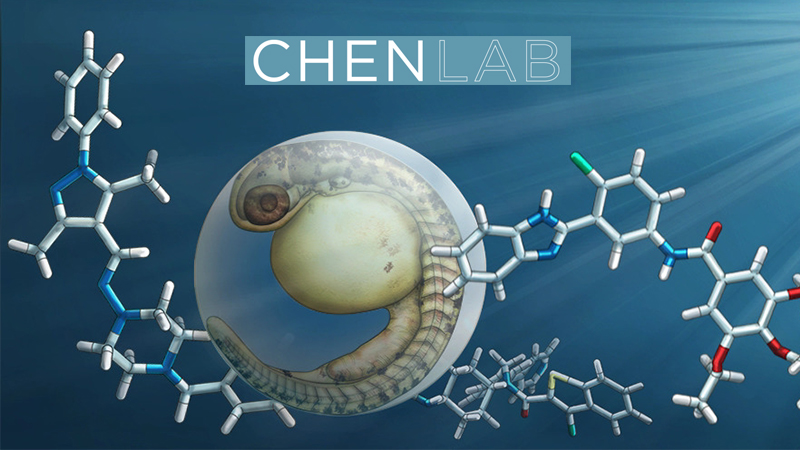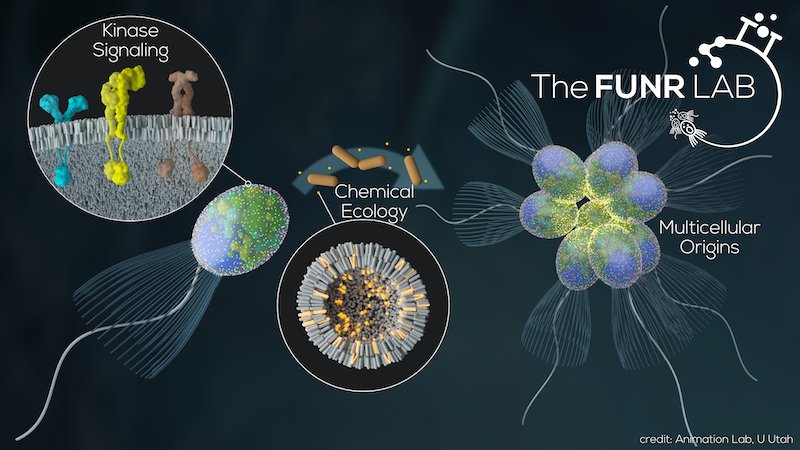
Allen Lab
The Allen Lab aims to understand fundamental principles underlying the homeostasis, plasticity, and resilience of cells and circuits in the mammalian brain. Our approach bridges molecular, cellular, and systems neuroscience to obtain comprehensive insights into mechanisms of brain function and dysfunction at multiple scales. To answer previously intractable questions and expand our ability to engineer biological systems, we develop new technologies that span computation, synthetic biology, imaging, genomics, and neuroscience.

Beachy Lab
The Beachy lab studies the function of Hedgehog proteins and other extracellular signals in morphogenesis (pattern formation) and in injury repair and regeneration (pattern maintenance). We study how the distribution of such signals is regulated in tissues, how cells perceive and respond to distinct concentrations of signals, and how such signaling pathways arose in evolution. We also study the normal roles of such signals in stem-cell physiology and their abnormal roles in the formation and expansion of cancer stem cells.

Bejarano Lab
The Bejerano Lab focuses on a fundamental question in Human Genomics: the relationship between geno(me)type and phenotype. Join us

Boettiger Lab
We seek to understand the control of gene expression.
A major direction in the lab is to understand how such long-range interactions occur, how they achieve target specificity, and how they may be reprogrammed by alterations to the genome sequence.

Bowling Lab
The Bowling lab aims to understand how the mammalian embryo is capable of withstanding major perturbations during development. We use a combination of next-generation tools and classical embryological approaches to uncover mechanisms of tissue plasticity and resilience, with the aim of using this knowledge to understand resilience mechanisms in disease, regeneration, and aging.

Chen Lab

Crabtree Lab

Fuller Lab
We seek to understand the mechanisms that regulate self-renewal, proliferation and differentiation in adult stem cell linages.

FUNR Lab
We are a team of scientists fascinated by the origin of animal cell-cell communication and complexity. To uncover the core principles of animal cell signaling and development, we study choanoflagellates, the closest living relatives of animals with chemical biology, to reveal molecular function.

Goins Lab
The Goins Lab aims to understand how cells make decisions. Our research focuses on how young, immature blood stem cells, with the potential to become many different cell types, choose between these cell fates by studying the fundamental molecular and cellular mechanisms that control the decision-making process.

Jarosz Lab
Our aim is to identify and characterize systems that influence the interplay among genetic variation, phenotypic diversity, and environmental fluctuations at the molecular level, integrating our findings to gain insight into complex cellular systems.

Seung Kim Lab
Our goal is to identify and understand the pathways that govern organogenesis of the pancreas, a vital organ with endocrine and exocrine functions.

Kingsley Lab
Our laboratory is using genetic mapping, comparative sequence analysis, and functional tests to identify the genomic basis of classic evolutionary traits in vertebrates. We take advantage of the best feature of both model and non-model organisms, including laboratory mice, wild stickleback fish, and pluripotent stem cells from humans and non-human primates. By combining insights from multiple systems, it’s possible to identify the detailed molecular basis of many interesting evolutionary differences, including classic traits and diseases that affect millions of people around the world.

Loh Lab
As developmental biologists, we aspire to understand how pluripotent cells become diversified into lineages ranging from brain to blood to bone. By deciphering the underlying design principles, we hope to generate pure populations of these cell-types from embryonic and induced pluripotent stem cells for regenerative medicine.

Martinez Lab
The Martinez lab studies RNA regulatory mechanisms that control gene expression. We focus on mRNA processing, RNA modifications and their roles in development and disease.

Nusse Lab
Our laboratory is interested in the growth, development and integrity of animal tissues. We study multiple different organs, trying to identify common principles, and we extend these investigations to cancer and injury repair.

Shapiro Lab
Understanding the control logic in the bacterium Caulobacter crescentus has progressed to the point where we now have an integrated systems view of the operation of its entire cell cycle functioning as a state machine.
Our lab takes an interdisciplinary approach to understand the systems biology of a living cell.

Talbot Lab
Our research focuses on the development and function of glial cells in the vertebrate nervous system. Using genetic screens and cellular approaches in zebrafish, we aim to discover new genes with essential functions in glial cells, define new animal models of important disorders in humans, and provide new avenues toward therapies for injury and disease of the nervous system.

Villeneuve Lab
Research in the Villeneuve lab is aimed at understanding the molecular and cellular mechanisms underlying the faithful inheritance and function of eukaryotic chromosomes. Our primary focus is on elucidating the events required for the orderly segregation of homologous chromosomes during meiosis, the crucial process by which diploid germ cells generate haploid gametes.

Wang Lab
We are a discovery-driven research group working at the interface between developmental biology, bioengineering, and statistical physics. We combine quantitative organism-wide fluorescence imaging ("deep imaging"), functional genomics ("deep sequencing"), and statistical modeling to understand the fundamental rules that control collective cell behaviors to optimize tissue organization, regeneration, adaptation, and evolution. We also seek opportunities for applying these rules to improve engineering systems.

Weissman Lab
Dr. Weissman’s laboratory is working on identifying and characterizing the progression of discrete changes, genetic and epigenetic, that leads to the generation of cancer stem cells (CSCs) from a variety of blood and solid tissue cancers. They have found a single molecular event present in all cancers studied to date that protects them from macrophages of the innate immune system.

Wysocka Lab
The precise and robust regulation of gene expression is a cornerstone for complex biological life. Research in our laboratory is focused on understanding how regulatory information encoded by the genome is integrated with the transcriptional machinery and chromatin context to allow for emergence of form and function during human embryogenesis and evolution, and how perturbations in this process lead to disease.
Developmental Biology Labs






















